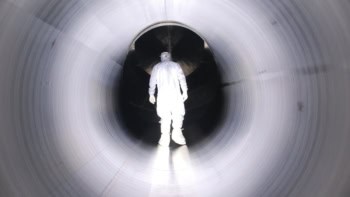The Standard Model of particle physics - which has mapped the subatomic world with remarkable success for over 30 years - has been challenged by new results from Brookhaven National Laboratory in the US. Precise measurements of the behaviour of muons in a magnetic field disagree significantly with the Standard Model. The international team - which believes the discovery may hint at a new and unexplored area of physics - broke the news in a special conference held at Brookhaven yesterday and hopes to publish its work in Physical Review Letters.

The Standard Model describes how three of the four fundamental forces – the strong, weak and electromagnetic forces, but not gravity – affect subatomic particles. The anomalous results came from an experiment to determine how much the ‘spin’ on a muon moves or ‘precesses’ when placed in a magnetic field. The physicists injected an intense beam of muons into a powerful magnetic field and measured the so-called g-2 (‘g minus 2’) value. The g-factor of a particle relates its magnetic moment to its intrinsic angular momentum or spin. The g-factor of both the muon and its lighter sibling, the electron, are slightly larger than 2 due to various ‘radiative corrections’. Precise measurements of g-2 are powerful tests of theory.
The team found that the new value differed from the Standard Model by 2.6 standard deviations – in contrast with values previously obtained less rigorous experiments that exactly matched the predictions of the theory. “We are 99% sure that the present Standard Model calculations cannot describe our data”, said Gerry Bunce, project manager of the experiment.
The results can be interpreted in three ways. Firstly, the Standard Model is fundamentally correct but need to be extended: the team could, for instance, have glimpsed evidence of supersymmetry. This theory states that every particle has a companion particle called its superpartner. “Many people believe that the discovery of supersymmetry may be just around the corner”, said team member Lee Roberts, “We may have opened the first tiny window to that world”. Secondly, it is still statistically possible that the value is consistent with theory. Thirdly, the model may be incomplete or entirely wrong.
The collaboration of physicists from the US, Russia, Japan and Germany has collected muon g-2 data since 1997, and the surprise result comes from data collected between 1997 and 1999. “When we analyse the data from the year 2000, we’ll halve the level of error”, said William Morse, a member of the Brookhaven team. The final analysis is expected within a year and data from accelerators in China and Russia should reduce the error even further.



